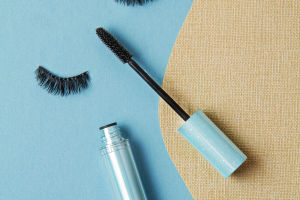Hey Lykkers! Natural cosmetics are a fantastic way to enhance your beauty routine while embracing a healthier lifestyle.
They’re not just good for your skin—they’re good for the planet too! Here’s a fun and informative guide to help you dive into the world of natural beauty.
Why Choose Natural Cosmetics?
Natural cosmetics are made from ingredients that are derived from plants, minerals, and other natural sources. These products often avoid synthetic chemicals, parabens, sulfates, and artificial fragrances. Here’s why you might want to consider making the switch:
1. Gentle on Skin: Natural ingredients tend to be less irritating and more nourishing. They’re often packed with vitamins and antioxidants that can improve your skin’s health over time.
2. Eco-Friendly: Many natural cosmetics brands prioritize sustainable sourcing and eco-friendly packaging, which helps reduce environmental impact.
3. Fewer Allergens: With fewer synthetic ingredients, there’s often a lower risk of allergic reactions and sensitivities.
Top Natural Cosmetics Brands to Try
1. Tata Harper: Known for luxurious, high-performance skincare products made from 100% natural ingredients.
2. Burt’s Bees: A beloved brand offering a wide range of natural beauty products, from lip balms to skincare.
3. RMS Beauty: Focuses on minimal, pure ingredients and offers a beautiful selection of makeup and skincare.
DIY Natural Beauty Recipes
If you love a bit of DIY, here are some simple recipes you can try at home:
1. Avocado Face Mask: Mash one ripe avocado and mix with a tablespoon of honey. Apply to your face for 10-15 minutes. Avocado is rich in vitamins and healthy fats, while honey has natural antibacterial properties.
2. Coconut Oil Body Scrub: Mix 1/2 cup of coconut oil with 1/2 cup of sugar. Use it to gently exfoliate your skin in the shower. Coconut oil moisturizes, while sugar helps remove dead skin cells.
3. Green Tea Toner: Brew a cup of green tea, let it cool, and use it as a toner. Green tea is rich in antioxidants and can help soothe and refresh your skin.
Tips for Choosing Natural Cosmetics
1. Check the Ingredients: Look for products with short ingredient lists and familiar names. Avoid those with long lists of chemicals.
2. Do a Patch Test: Even natural ingredients can cause reactions. Test a small amount of product on your skin before full use.
3. Look for Certifications: Certifications like USDA Organic or cruelty-free can be good indicators of a product's natural integrity.
Switching to natural cosmetics is a wonderful way to align your beauty routine with a healthier lifestyle. By choosing products that are kind to both your skin and the environment, you’re making a positive impact on your well-being and the planet. So why not give it a try? Your skin—and the Earth—will thank you!
Hope you found this guide helpful and inspiring. Here’s to a more natural and vibrant you!


